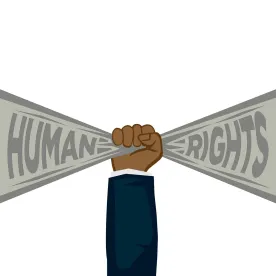How do you tackle the complicated and often seemingly insurmountable problem of human rights abuses around the world? The U.S. government typically uses a variety of tools: diplomatic efforts, international aid, sanctions, import restrictions on forced labor – the whole carrot-and-stick universe. Enter… Export Controls.
Background
Last Friday, at the Summit for Democracy, the United States, Australia, Denmark, and Norway, announced a new multilateral partnership, the Export Controls and Human Rights Initiative, to curb the misuse of technologies by governments to repress their peoples. Canada, France, the Netherlands, and the United Kingdom also expressed support for the initiative. The joint statement by the partnering countries noted that “authoritarian governments increasingly are using surveillance tools and other related technologies in connection with serious human rights abuses” including to “censor political opposition and track dissidents.”
The Biden administration has taken a number of actions that demonstrate a focus on using export and trade policy tools to address human rights abuses, including:
-
Entity List Additions: The Commerce Department has added many entities to the Entity List restricting any exports of items subject to the Export Administration Regulations to designated individuals and entities, (1) in connection with human rights abuses in China of the Uyghur, Kazakh, and other Muslim minority groups; (2) in connection with the Burmese military following the coup in Burma; and (3) in connection with the supply of spyware to foreign governments used to target journalists, activists, academics, officials and embassy workers.
-
Cyber-intrusion Software Controls: In October, the Commerce Department issued an interim final rule that would impose controls on the export, re-export, or transfer of certain cybersecurity tools and related technology that can be used for hacking and other malicious cyber activities. The rule would target custom-made hacking tools that have been misused to surveil citizens outside of legitimate law enforcement and intelligence applications.
-
National Action Plan to Combat Human Trafficking. In early December, the White House published an action plan on combatting human trafficking, including forced labor. The plan tasks the USTR to “consider all options to combat forced labor” including engaging allies to fight forced labor. Additionally, the plan calls for increased efforts throughout federal agencies (e.g., DOJ’s Human Trafficking Unit, FBI’s Crimes Against Children and Human Trafficking Unit, and DHS Center for Countering Human Trafficking) to investigate and prosecute novel cases against companies that benefit from forced labor within their supply chains.
Key Takeaways and What to Expect
-
Increased Cooperation. Though the creation of the new plurilateral partnership does not have an immediate impact on current export controls, we can expect to see greater collaboration between countries on ensuring that trade controls are centered around human rights, specifically impacting technologies related to cyber intrusion, surveillance, and other dual use technologies often used to crack down on dissenters.
-
Code of Conduct. The partnership has committed to, among other things, creating a voluntary written code of conduct intended to guide the application of human rights criteria to export licensing policy and practice (see here). Compliance policies that encompass human rights considerations may become more of a market standard given the expansion of ESG considerations in M&A, investments, and stakeholder engagement on these issues (see our blog post here). Companies that deal in dual-use technologies that could potentially be used to commit human rights abuses should consider getting ahead of the game by considering how to enhance their existing policies and procedures to proactively address these issues.
-
Emerging Technology Controls. In November 2018, the Commerce Department published an Advance Notice of Proposed Rulemaking seeking public comment on criteria for “identifying emerging technologies that are essential to U.S. national security, for example because they have potential conventional weapons, intelligence collection, weapons of mass destruction, or terrorist applications or could provide the United States with a qualitative military or intelligence advantage.” Many of the technologies listed could potentially be misused by repressive governments, including Artificial intelligence (AI) and advanced surveillance technologies (e.g., facial recognition technologies) (see here). As the rules are proposed, we may see stricter controls on technologies that pose a threat of being misused to abuse human rights.
It is clear that this government is incorporating human rights considerations into its trade, export and sanctions policy in a meaningful way. And hopefully, it is here to stay. Companies that deal in sensitive technologies can get ahead of the curve by integrating human rights-related diligence and considerations into their compliance framework.




 />i
/>i
